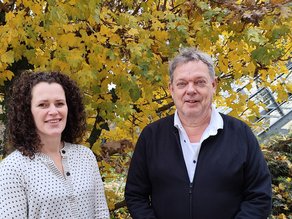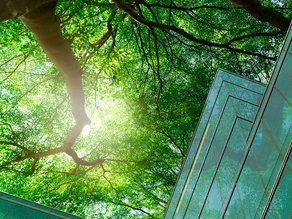Circular and biobased Ekowood Houses with CAT 1 data in National Environmental Database
Not developing products (houses) from a project, but developing projects from the product. That is the vision of Ekowood Houses.
[Photographer: Hans Oordt]

Ekowood Houses devised an innovative method to produce, assemble and maintain turn-key homes. Made from biobased materials with high insulation value, Ekowood Houses are healthier to live in, more energy efficient and fully circular. Among others, Ekowood Houses' pitched roof elements can now be found with category 1 data in the National Environmental Database. An interview with director Martijn van Toor.
Ekowood Houses have been able to show great figures on the performance of the houses for some time. The CO2 footprint of Ekowood Houses versus traditional construction is about 60-65% lower. The building system is vapor-open and because of the high insulation value (RC 7.5), only a minimal amount of installation is needed: a boiler (hot water), solar panels (electricity), infrared panels (heat) and a CO2-controlled ventilation system. Due to the stable humidity and soundproofing properties, the homes receive a platinum score with Healthy Home Inspection. And the Building Circularity Index is 65%.

Directeur Martijn van Toor
Ekowood Houses
Independent proof
Still, Ekowood Houses felt a strong need to have a life cycle analysis done and to have the individual elements that make up an Ekowood House included in the National Environmental Database.
Martijn: “This is super important for us to show what we do. The life cycle analyses now independently prove how our building system scores compared to other building systems. We had an LCA made of five components of the house. With those five components you grab about 80-90% of the building materials we use to build a home. We also challenged our partners and suppliers to get started with an LCA as well. An Ekowood House will be built with Wienerberger's Clickbrick brick, among other things; they already have an LCA for this product and are listed with category 1 data in the National Environmental Database. For example, for the window frames from Groothuis Timmerfabriek, it is still to come.”

Circular and biobased total concept
Ekowood Houses came into being about eight years ago. The construction method was already there, but was only used on a small scale in villa construction. Martijn and his co-owners decided to market it on a large scale with the establishment of Ekowood Houses.
“We developed a total concept where houses are not developed from the project, but projects are developed from our housing concept. Whether it is stacked construction or ground-level housing, the timber construction method is always the same, with the same type of walls and roofs. Even the method of heating is always identical and different from standard, namely with infrared panels.”
Made almost entirely of wood
It went - and is going - fast with the growth of Ekowood Houses. “The people who live in the houses are tremendously enthusiastic. They feel good. This allows us to show potential clients the effect of what we make. So soon after Ekowood Houses started, a project for five homes in Leeuwarden came up. And shortly thereafter a project for a residential tower with 45 houses and 24 row houses in Amsterdam. All made of wood, including in the core.”
Martijn adds that last point for good reason. “What you see a lot now with timber construction is that the sand-lime brick for the walls is stripped out and replaced with CLT. But CLT insulates poorly, so glass wool is often added for insulation. We work with wood fiber insulation boards. As a result, our walls are really all wood and our insulation value is also so high, which is an RC of 7.5.”
Innovations Ekowood Houses also implemented. “For the floors, we used to bring the CLT floor to the construction site and pour concrete on top of it. Now we already connect the wood and concrete in the factory. That we bring the wood concrete floor to construction as a whole is super innovative.”

CO2 tax or subsidy?
Martijn is pleased that it can now all be found in the National Environmental Database. “Every home we build has a CO2 neutral footprint and already meets the future high environmental performance requirements. There is now independent evidence of that. If we get questions about it I can say: just look in the NMD.”
“What I would find very cool is if added to the NMD is still how much CO2 is stored in a product and that this is linked to a CO2 tax or just a discount. Our homes store a lot of CO2 through the use of wood and wood fiber boards. 1 m³ of wood contains about 1 ton of CO2, extracted from the atmosphere during the growth of the wood. Assuming that about 100 m³ of wood is used for a single-family home built with wood, this equates to about 100 tons of CO2 removed from the atmosphere.”

Consciously opting for biobased
“I do expect this to play a bigger role in the future. That it will benefit housing corporations and other developers if they choose homes with these kinds of positive features. Or that as an individual you will get a discount on your mortgage if you choose a home with a good environmental score.”
“Either way, we in the industry should all pursue the use of biobased materials. And then also proven, with independently verified data in the NMD.”
This page was translated using DeepL.



